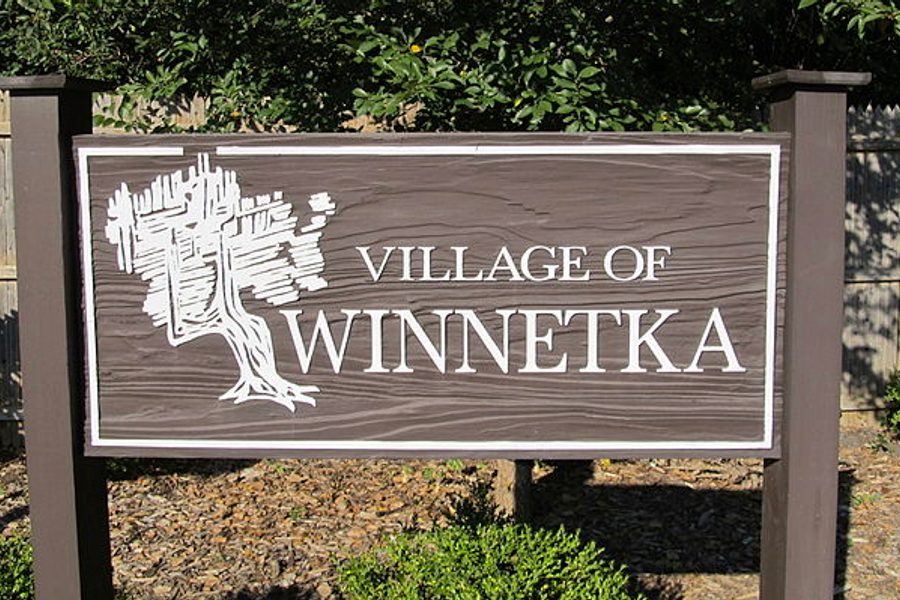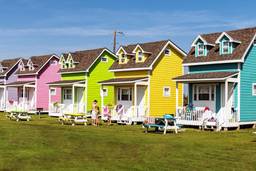Exiling the Poor
Affluent suburban communities are refusing to build state-mandated affordable housing, leaving the inner-city poor with few options
Daniel Hertz

On the same day that Illinois Republicans voted to endorse Mitt Romney, residents in Winnetka, a Chicago suburb, voted on a seemingly straightforward question: “Should the Village of Winnetka expand [its] existing Affordable Housing Plan?” Seventy-five percent of voters answered, “No.”
The plan, whose tweaks to zoning law and modest subsidies might have been quietly approved in another place and time, instead became the center of a raging debate in which usually civil neighbors slung personal insults, community newsletters warned about a coming wave of sex offenders and the village council attempted to issue itself a gag order. The vote was the final nail in the coffin for an ambitious campaign, nearly a decade in the making, to open Winnetka’s housing stock to teachers, nurses, retirees, and students – among other working and middle-class people – who might want to settle among the CEOs and investment bankers who currently populate a community with a median household income of $167,000 a year.
But while some of the country’s wealthiest people rushed to reinforce the walls around their neighborhoods, others just a few miles away were tentatively pulling them down. Lake Forest, a suburb that, like Winnetka, is a member of Chicago’s wealthy North Shore, was preparing to sell its first two subsidized homes, using a model that had been employed with considerable success elsewhere in the area.
None of this would especially matter if affordable, safe neighborhoods in good school districts were plentiful. But they’re not. And even as the country’s Cory Bookers and Rahm Emanuels try to turn around their constituents’ struggling communities, those inclined to move to a place with stronger schools and less crime are finding it an increasingly unrealistic option. Absent of state and federal leadership, places like Chicago’s North Shore have the greatest power to do something about our deepening economic segregation. Will they?
Tenements and castles
Since they were first urbanized during the last Gilded Age, Winnetka and its neighbors have been the focus of debates over class and housing. One of the earliest critics of the area was Winnetka resident Henry Demarest Lloyd, a journalist who ran for Congress on the Populist ticket in 1894. A statue dedicated to him sits near the lakefront, surrounded by multi-million dollar homes, and reads: “No tenements for some and castles for others.”
But even in Lloyd’s time, the North Shore wasn’t the island of exclusivity it is today. Some workers stayed in their employers’ coach houses, or in apartments over stores near the commuter rail station. Over the course of the 20th century, however, zoning laws made it difficult to build multi-family buildings outside of the already-established downtown, and the apartment buildings that once housed lower-income workers were either converted to offices or allowed to decay. As land values rose, many of the smaller single-family homes were torn down in favor of mansions.
A study commissioned by Winnetka, and carried out by the University of Illinois at Chicago, found that between 1980 and 2000, the village lost 40% of its available apartments for rent, while more than half of its coach houses had been zoned out of the housing market. In part because of those trends, the only income demographic that grew during that period was households making over $150,000 a year.
Winnetka is not the only place where the rich and poor are finding themselves increasingly isolated. In a study published in late 2011, researchers at Stanford University found that in nearly 90% of American cities, rich and poor lived further apart at the end of the 2000s than they had four decades before; those results held even when higher economic inequality was taken into account. In other words, as much as income inequality has exploded in America, income segregation has grown even faster.
That kind of economic isolation carries serious consequences. High-poverty neighborhoods saddle their residents with troubles (such as poor health or difficulty finding employment) that they’d be less likely to encounter, at any income, in middle-class areas. Then, of course, there’s crime and schools. The Brookings Institute found in an April study that high-scoring school districts countrywide have home values that are, on average, over $200,000 greater than in low-scoring districts. As middle-class neighborhoods disappear, families are increasingly forced to either stretch their resources – if possible – or fall on the wrong side of a widening divide.
Winnetka at war
In 2003, the Illinois state legislature passed an affordable housing act requiring that at least 10 percent of housing units in every municipality be affordable to a family making no more than 60 percent of the area’s median income. Most places already met that threshold. But 49 municipalities didn’t – including Winnetka and eight other North Shore suburbs.
“The state law came down, and it said if you’re not in compliance, you’re in trouble,” says Becky Hurley, who chaired the Winnetka Plan Commission during the affordable housing fight. The state law required municipalities in Winnetka’s position to submit an affordability plan to the state, so in 2003 the commission set out to put together a plan to be voted on by the village council.
The commission’s initial proposals included establishing a community land trust; relaxing the laws against renting coach houses; cracking down on landlords who allowed their properties to become so dilapidated that potential lessees were discouraged from living there; mandating that developers of large multi-family properties set aside 20% of their units for low- and moderate-income families; and a number of other measures that they believed would pass relatively easily.
Instead, the commission was drawn into a protracted battle with the Winnetka Homeowners’ Association (WHOA). After the village council dragged its feet on the plan, ultimately taking five years to schedule a vote on the commission’s report, 150 people on both sides showed up at the public hearing to “hoot and holler,” according to Gail Schechter, executive director of the Interfaith Housing Center.
Carry Buck, the founder of WHOA, led the anti-speakers. (Buck, and several other community leaders associated with WHOA, declined repeated interview requests.) But according to Hurley and Schechter, those in favor of the plan had come prepared. “We had a petition in favor there,” says Hurley, “and when we tallied the for and against, we had about equal numbers.”
Soon after, the e-mails and newsletters began to appear. With an extensive mailing list of Winnetka residents, WHOA warned that the affordable housing plan would be a disaster for the village.
“They have cleaned up Cabrini Green,” one newsletter proclaimed, referring to the infamous Chicago housing project, and “now you want Winnetka Green.”
In another, an anonymous resident testified about the kinds of characters who live in “mixed-income housing”: “The crack head…, [the] cell mate who got out early and needs a place to stay, the cousin who’s on house arrest for a sex crime – living on a common wall with your five-year-old.” Several made references to Section 8 housing, which was not part of the Plan Commission’s recommendations.
The newsletters also took aim at the village council, which was up for election in early April 2011, and promoted its own slate of anti-affordable housing candidates. When the vote came, all three of WHOA’s candidates won, defeating incumbent and Plan Commission supporter Linda Pedian in the process.
A week after the election, the lame duck council listened to Hurley give the Commission’s final report. At that meeting, the council actually passed a few of the smaller measures – allowing coach houses to be rented more easily, and creating a property maintenance code for downtown apartments – but asked for more time to study the land trust and inclusionary zoning provisions.
But those stronger measures never came up for a vote. The newly elected council didn’t get around to addressing them until November. When that day finally came, instead of voting on the proposals, WHOA-backed Council Member Richard Kates read a resolution that aimed to prohibit the council from talking about Winnetka’s affordable housing plan ever again.
According to the public minutes, the city’s lawyer objected, and “explained…that no Council had ever taken an action that would require a legislative act by future Councils to discuss a matter.” This was followed by – according to the minutes – a “lengthy discussion.”
Finally, at its next meeting in December, the council passed an amended version of the resolution. “Be it resolved,” it read, “…the work…under the…Affordable Housing Plan…is deemed complete and its responsibility there under is deemed discharged.” Winnetka was done with affordable housing.
The land trust model
Other North Shore communities have made greater progress with their own affordable housing programs. The undisputed leader is Highland Park, which begun working on an affordability program in the late 1990s.
“Highland Park has always been a much more liberal area,” says Mary Ellen Tamasy, who runs the north suburban Lake County Residential Development Corporation (LCRDC). “They’ve always had a brighter vision of being more inclusive.”
In 2003, the city created the Highland Park Illinois Community Land Trust. Based on a model developed in Vermont and now used throughout the country, the HPICLT bought single-family homes and then sold only the home itself, retaining ownership of the land. By separating the cost of the structure and the land, the city could reduce the sale price by nearly half. Restrictions written into the buyer’s contract limited the amount of appreciation, allowing the owner to build some equity while making sure that the house remained affordable for the next buyer without a new subsidy.
“The land trust model is particularly effective in high-price areas, because the house itself doesn’t cost any more than it does in [more blue-collar neighborhoods],” says Rob Anthony, the executive director of Community Partners for Affordable Housing (CPAH), the name HPICLT adopted in 2008. “It’s taking the land value out of the equation.”
Land trusts also avoid two of the bigger reasons for community opposition to affordable housing programs: Density and prejudice against people who don’t own their homes.
“If you’re going into a community like [the North Shore],” Anthony says, “which has concerns about affordable housing, the home ownership model is easier to get people to understand and accept. There’s this stereotype that renters don’t take care of their property, whereas with a homeownership model, people are less concerned about those things.”
CPAH’s reputation as one of the leading affordable housing organizations on the North Shore led nearby Lake Forest to ask them to pilot a land trust program in that city as well. Another, more traditional, townhouse project was running into serious neighborhood objections – and would eventually be killed – but pro-affordable housing forces in Lake Forest had two major local institutions on their side.
“The college was supportive of [affordable housing],” says Leslie Chapman, vice president of business affairs at Lake Forest College, a private four-year school. Since the average house in Lake Forest costs well over $600,000, most faculty couldn’t afford to live there. The college had tried to deal with the problem itself, building 30 apartments on campus and creating a mortgage assistance program, but it wasn’t enough.
Lake Forest Hospital was in an even more precarious position. Medical staff on call needed to live within a 30-minute drive of the hospital, but many couldn’t find an affordable place to live in that range.
Recalling the public meetings about the city’s land trust plans, Chapman says, “Some of the criticisms – if you want your employees to live here, you should pay them more. It’s unrealistic. The college and the hospital pay competitively. It just takes so much greater income to live in Lake Forest.”
Representatives from both the college and the hospital were on hand at those meetings to testify about the need for more affordable housing in the area. By last December, around the same time that the townhouse project was officially rejected, Lake Forest had begun taking applications for its first two land trust homes.
Successes too small?
Marek Stefaniszyn lives in one of Highland Park’s 33 land trust homes with his wife, who cleans houses around town. “We were living in Chicago,” he explains, but it was a very long commute, and they decided to look for something on the North Shore. Eventually they found an apartment, but “prices were very high, even for renting.”
Then they came across one of CPAH’s listings online. “Now [our payments] are almost $200 a month less.” In addition to being closer to his wife’s work and owning their home, they get to be full-fledged members of the community. “The neighborhood is very nice. Sometimes we meet our neighbors on the holidays, and they come to my house, or we go to theirs.”
Successes like this didn’t come easily, even in Highland Park. As in Lake Forest, larger, more traditional projects have been blocked by neighborhood opposition. But Rob Anthony says affordable housing advocates were able to build on the success of smaller, “safer” projects like land trust homes.
CPAH also does aggressive community outreach, inviting elected officials, business leaders and people from the neighborhoods they work in to help rehab the homes before they’re sold. In the process, they meet the people – nurses, teachers and service workers, as opposed to crack heads – who will live there. Those volunteer days, along with other educational campaigns, “pay such dividends,” Anthony says. “We’ve developed a bit of a track record now, a lot of the neighbors know more about who we are and what we do.”
“Perhaps if there had been something that the residents had seen elsewhere that was working their fears might have been alleviated,” says Leslie Chapman, talking about Lake Forest’s failed attempt to build townhouses. And while few people believe Carry Buck would have supported – or not vociferously opposed – any kind of affordable housing, the complex, multi-part program that Winnetka’s Plan Commission proposed may have been easier to mischaracterize than the stand-alone land trusts in Lake Forest and Highland Park.
“When you’re dealing with something for the first time and in the abstract,” Chapman says, “people end up with more questions.”
But starting slow has its drawbacks, too. “I have tremendous respect for what Highland Park has done,” says Becky Hurley. “They’ve created the template for this. But we were taken by the fact that even though they’ve been a leader in this for decades, they only have something like 17 affordable housing units, other than senior housing. Just because it’s so expensive to create a single unit.”
And, as Anthony admits, even reducing home costs by half in the nation’s most expensive neighborhoods still leaves a lot of people priced out. Moreover, people who are unable to qualify for loans – including anyone who’s recently declared bankruptcy – won’t be able to buy, no matter how cheap. Ultimately, America’s income segregation problem will need more expansive affordable housing measures, including rental options. And communities like Lake Forest and Winnetka likely won’t accept that without some serious prodding by state or regional governments.
The good news is that there are templates for that, too. Montgomery County, Maryland, created one of the pioneering inclusionary zoning codes back in the 1970s, requiring developers to offer low-cost housing in exchange for greater density. In New Jersey, a series of court decisions in the 1970s and ’80s led to ambitious affordable housing mandates in that state as well (although current Republican Governor Chris Christie is working to reverse them). And there’s evidence that zoning favorable to economic integration really makes an impact: The same Brookings study that found the $200,000 home price gap between good and bad school districts also discovered that that gap shrinks by more than 40% in metro areas with the least restrictive zoning laws.
But until that kind of policy is enacted at a broader level, economic segregation will continue to be one of this country’s greatest injustices. And it will be up to the citizens of the nation’s Winnetkas and Lake Forests to decide if they’re content to live in castles while so many others live in tenements.







